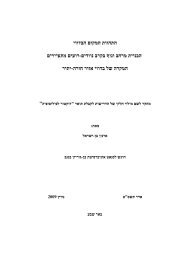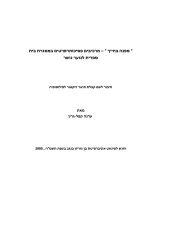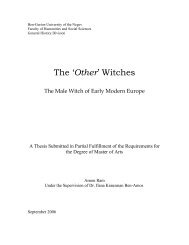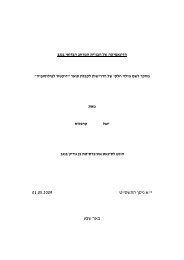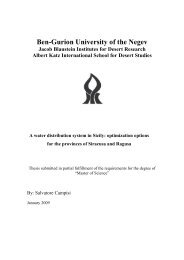CHARACTERIZATION OF DESERT DATE (Balanites aegyptiaca)
CHARACTERIZATION OF DESERT DATE (Balanites aegyptiaca)
CHARACTERIZATION OF DESERT DATE (Balanites aegyptiaca)
Create successful ePaper yourself
Turn your PDF publications into a flip-book with our unique Google optimized e-Paper software.
Although the precise mechanism of the interaction of saponins with the cell membrane is<br />
not fully understood (Morrissey and Osbourn, 1999), it is generally accepted that the<br />
antifungal activity of saponins is related to their ability to complex with sterols in the fungal<br />
membranes and thereby cause a loss of membrane integrity (Keukens et al. 1995; Morrissey<br />
and Osbourn 1999). It has also been suggested that the saponin-sterol membrane complexes<br />
ultimately form aggregates that lead to the formation of membrane pores (Armah et al.,<br />
1999).<br />
B. <strong>aegyptiaca</strong> and saponins<br />
A literature survey shows that B. <strong>aegyptiaca</strong> contains both spirostanol and furostanol<br />
saponins (Liu and Nakanishi, 1982; Pettit et al., 1991; Hosney et al., 1992; Kamel, 1998)<br />
together with flavonoid glycosides (Kamel et al. 1991), sapogenol, and 6-methyldisgenin<br />
(Hosney et al., 1992). Liu and Nakanishi (1982) isolated three spirostanol saponins,<br />
balanitin-1, -2, and -3 from 60% aqueous methanol extracts of the bark and root of<br />
<strong>Balanites</strong> <strong>aegyptiaca</strong>. Pettit et al. (1991) isolated four new cytostatic steroidal saponins,<br />
called balanitin-4, -5, -6, and -7, from the CH2Cl2/MeOH (1:1) extract of the kernels.<br />
Hosney et al. (1992) reported balanitin-3 from fruit mesocarp using methanol extracts.<br />
They also isolated a new furostanol saponin, balanitoside, and 6-methyldiosgen. Kamel et<br />
al. (1991) have isolated two new steroidal saponins and two previously known saponins<br />
from the water-extract of the mesocarp. The known saponins were previously isolated from<br />
the rhizomes of Dioscorea gracillima (Kawasaki et al., 1974). These compounds can be<br />
used as the starting materials in the synthesis of oral contraceptives, sex hormones, and<br />
other steroids, such as corticoids and anabolic compounds for which there has been an<br />
excellent market since the 1960s. Up to the present, diosgenin and related steroidal<br />
saponins have been obtained commercially from the tubers of various Dioscorea species.<br />
However, the need to discover alternative sources for these compounds has become crucial<br />
because of decreasing supply and increasing demand for the plant resources currently in<br />
use.<br />
A significant number of works on isolation and structure determination of natural<br />
products from the B. <strong>aegyptiaca</strong> have been carried out. However, almost all are from either<br />
11





